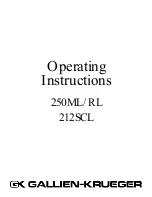
Advanced Micro Instruments, Inc.
Page 20
has been in operation, how much oxygen it has been exposed to, and how long it has been exposed to
temperature extremes. Of course it can only do this while it is turned on, but it does track the total length of
time it was been out of operation as well, so you can get an idea of the state of the sensor.
It also keeps in storage the details of the last sensor it used, so you can compare them. All of this is available
through the User Interface Program.
Calibration History:
The analyzer stores the last five times it was calibrated, whether via the front panel or via the User Interface
program. When it detects a change in its Span Factor, it stores the time and date, the new value of Span Factor,
and the oxygen value it was reading when it does so, giving you an idea of the span gas that was being used. If
the unit is calibrated several times in one day, it only stores the last time – it doesn’t fill up the storage with
failed attempts.
Note that if a user adjusts the span without using a span gas, this feature will tell you that, since the gas value it
stores will look odd.
Turn-on/turn-off history:
The analyzer stores the last ten times it was turned on (it doesn’t have a chance to store times it was turned
off). It also records how many memory errors it saw when it was turned on and loaded its operational memory
from its non-volatile storage. It actually stores its important parameters in four separate locations and thus
won’t be affected by individual memory errors, but if it does ever show errors it implies something is wrong with
the electronics.
















































